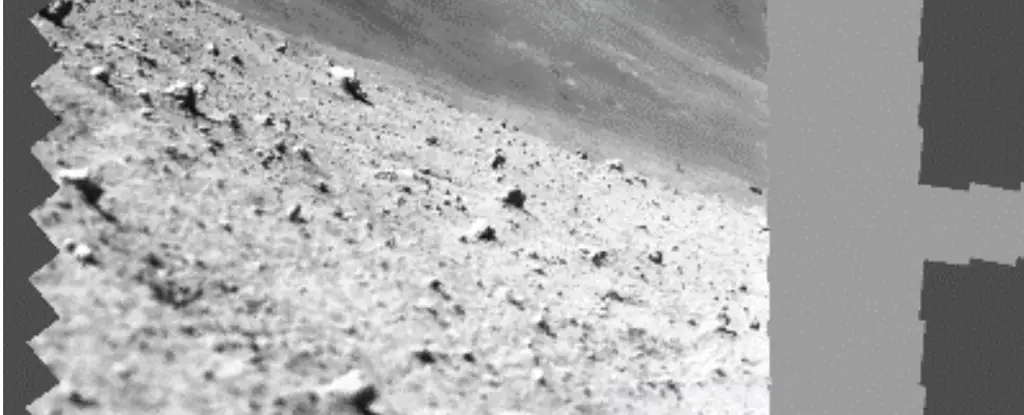Japan’s Moon lander, known as the Smart Lander for Investigating Moon (SLIM), recently captured its first images of the lunar surface. However, this achievement is overshadowed by the fact that the lander is currently upside down and unable to continue its mission. Despite this setback, SLIM managed to gather some valuable data before shutting down, offering a glimpse into the potential of future lunar exploration.
The photos taken by SLIM provide an incredible level of detail, revealing a gray, rubble-covered lunar landscape. Unfortunately, these images were captured right before the Japan Aerospace Exploration Agency (JAXA) had to turn off the lander. At present, it remains uncertain whether SLIM will be able to resume operations. The compilation of the images is incomplete, as the camera stopped scanning. This showcases the challenges encountered during this mission and the importance of troubleshooting for future lunar explorations.
Japan’s landing on the Moon marks a significant milestone, making it the fifth country to achieve this feat. Joining the ranks of the United States, Russia, China, and India, Japan has demonstrated its capabilities in space exploration. SLIM, nicknamed the ‘Moon Sniper’ due to its precision landing capabilities, unfortunately experienced a nose-down landing, rendering its solar panels ineffective in generating power. Despite this setback, Japan’s achievement in reaching the lunar surface cannot be overlooked.
During its short operational period, SLIM managed to capture valuable information about the Moon’s surface. JAXA has already begun zooming in on the images and identifying various rocks of interest, assigning them adorable dog-themed names. The ability to collect data in such a limited timeframe demonstrates the potential for future lunar missions to uncover more secrets about our celestial neighbor.
The MBC camera on board SLIM also captured an image of the lander, showcasing its nose-down position. This snapshot serves as a visual reminder of the challenges faced during the mission. The Lunar Excursion Vehicle 2 (LEV-2 / SORA-Q), the world’s first robot to conduct fully autonomous exploration on the lunar surface, successfully took this image. The collaboration between different technological advancements highlights the progress made in both robotic exploration and space photography.
A Door to a New Era
Despite the setbacks faced by SLIM, the mission has already paved the way for future lunar exploration. JAXA’s project manager, Shinichiro Sakai, expressed his excitement upon seeing the image captured by the lander. He stated, “We demonstrated that we can land where we want.” This achievement opens up new possibilities for Japan and the rest of the world in terms of exploring the Moon and expanding our understanding of the universe.
The current location of the lander, situated on the slope of the Moon’s Shioli crater, provides hope for future reactivation of SLIM. If sunlight hits its solar panels again, the mission will resume and gather further data on the lunar surface’s chemical composition through spectroscopic photos. This potential revival highlights the significance of maintaining and upgrading the infrastructure of future lunar missions, ensuring resilience in challenging conditions.
Japan’s Moon lander, SLIM, may be currently down and out, but its journey has provided valuable insights and possibilities for future lunar exploration. The detailed images captured by SLIM offer a unique perspective of the Moon’s surface, and the challenges faced during its mission serve as stepping stones for future developments. This landmark achievement solidifies Japan’s position in the field of space exploration and brings us one step closer to unraveling the mysteries of our celestial neighbor.


Leave a Reply